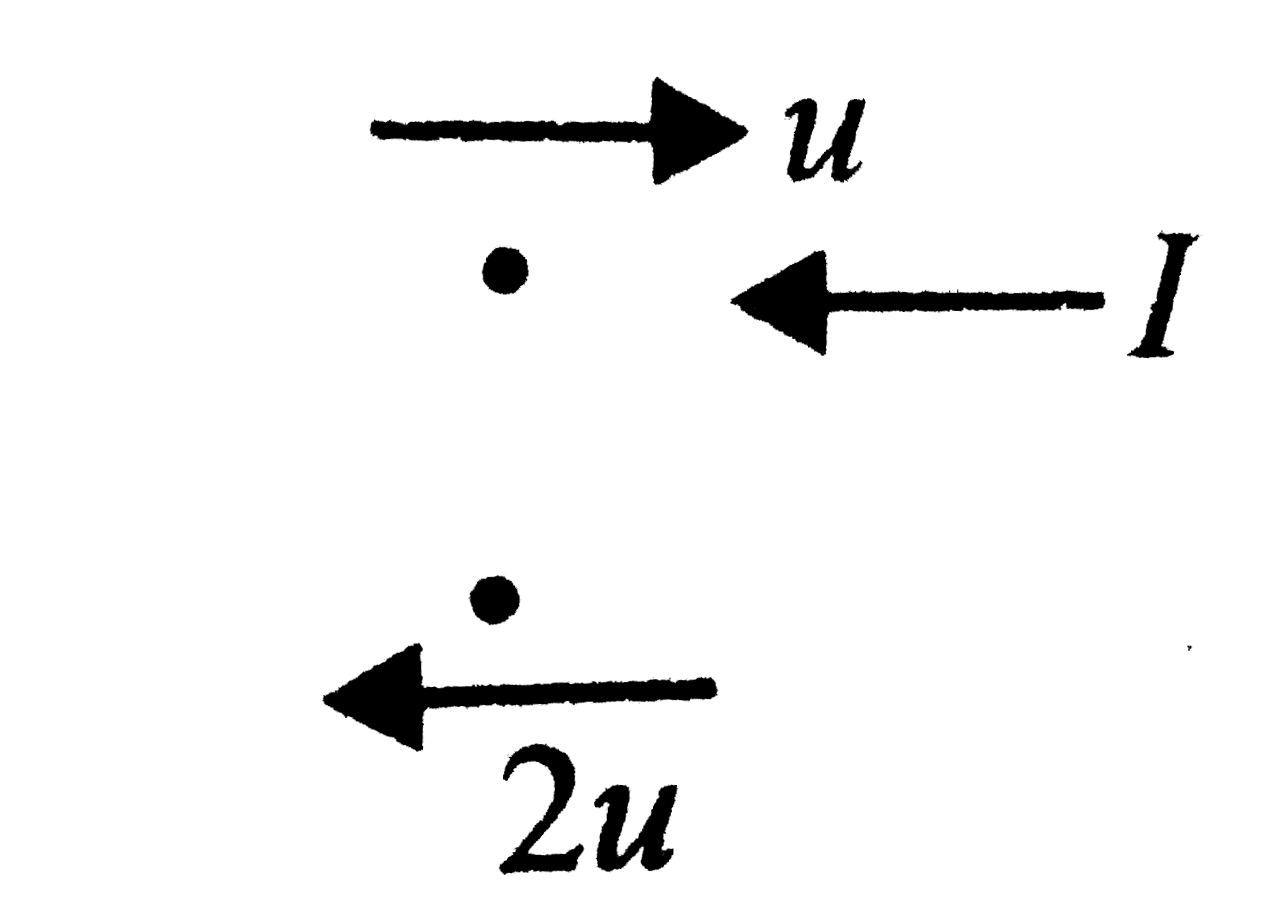A force exerts an impulse Ion a particle changing its speed from initial velocity u to final velocity 2u. The applied force and the initial velocity are oppositely oriented along the same line. The work done by the force is
32Iu
12Iu
Iu
2Iu
The correct Answer is:B
I=m[2u−(−u)=3mu
W=12m[(2u)2−u2]=3mu22=Iu2

Topper's Solved these Questions
- BOOK - CENGAGE PHYSICSCHAPTER - CENTRE OF MASSEXERCISE - Multiple Correct25videos
CENTRE OF MASS
- BOOK - CENGAGE PHYSICSCHAPTER - CENTRE OF MASSEXERCISE - Assertion - Reasoning2videos
CENTRE OF MASS
- BOOK - CENGAGE PHYSICSCHAPTER - CENTRE OF MASSEXERCISE - Subjective23videos
CENTRE OF MASS
- BOOK - CENGAGE PHYSICSCHAPTER - CALORIMETRYEXERCISE - Solved Example13videos
CALORIMETRY
- BOOK - CENGAGE PHYSICSCHAPTER - DIMENSIONS & MEASUREMENTEXERCISE - Integer2videos
DIMENSIONS & MEASUREMENT
Similar Questions
A force exerts an impulse J on a body changing its speed from u to υ. The force and object's motion are along the same line. Show that the work done by the force is J(u+υ)/2
View SolutionCertain force acting on a 20 kg mass changes its velocity from 5m/s→2m/s. calculate the work done by the force.
View Solution
Knowledge Check
- Question 1 - Select One
A force exerts an impulse I on a particle changing its speed from u to 2u. The applied force and the initial velocity are oppositely directed along the same line. The work done by the force is
A32IuB12IuCIuD2Iu - Question 2 - Select One
A projectile fired with initial velocity u at some angle θ has a range R . If the initial velocity be doubled at the same angle of projection, then the range will be
A2RBR/2CRD4R - Question 3 - Select One
A body starting with a velocity v returns to its initial position after t second with the same speed, along the same line. Acceleration of the particle is
A−2vtBzeroCv2tDt2v
Statement - 1: A particle moves along a straight line with constant velocity. Now a constant non-zero force is applied on the particle in direction opposite to its initial velocity. After the force is applied, the net work done by this force may be zero in certain time intervals. Statement - 2 : The work done by a force acting on a particle is zero in any time interval if the force is always perpendicular to velocity of the particle.
View SolutionCertain force acting on a 20 kg mass changes its velocity from 5ms−1 to 2ms−1. Calculate the work done by the force.
View SolutionIf a particle with a=kv2 and initial velocity is u then velocity after S displacement. Here k is a constant
View SolutionFrom a point on the ground a particle is projected with initial velocity u,such that its horizontal range is maximum. The magnitude of average velocity during its ascent.
View SolutionA particle has initial A particle has initial velocity 10m/s. It moves due to constant retarding force along the line of velocity which produces a retardation of 5m/s2. Then
View Solution

